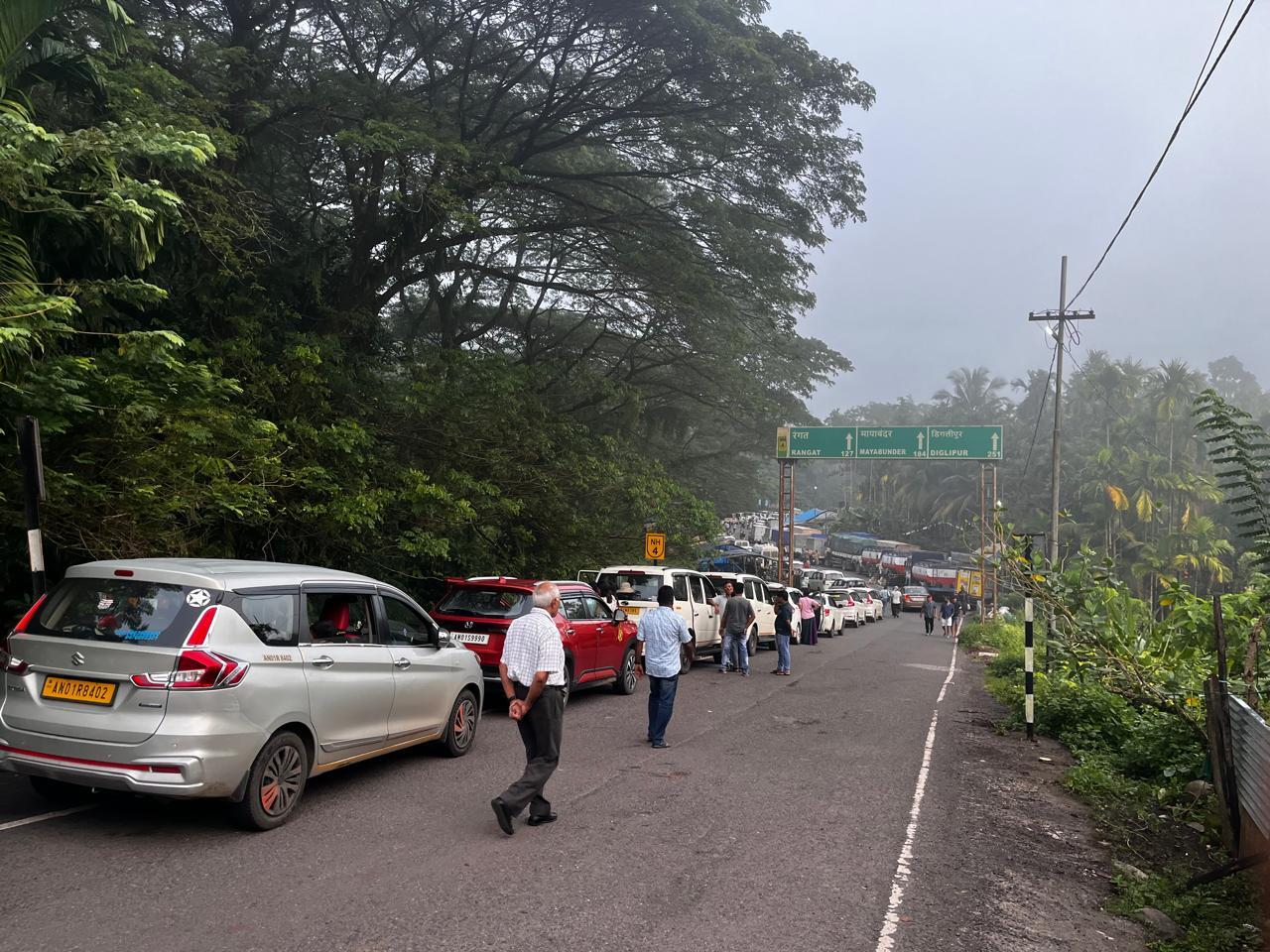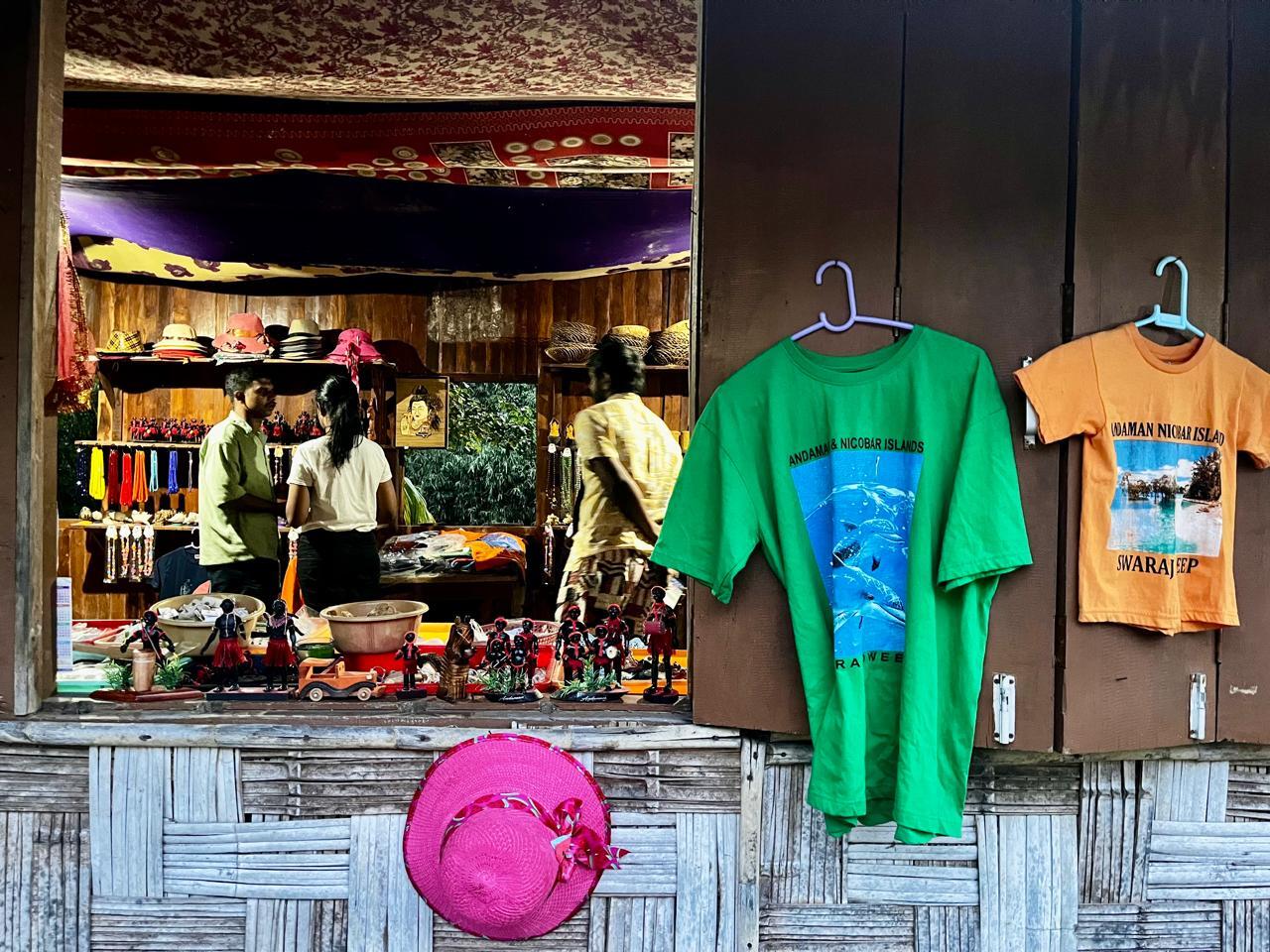The Indian government has distributed voter ID cards for the first time to members of a reclusive Andaman islands tribe, drawing concerns from activists that the event was a “publicity stunt” to distract from the imminent mass-scale industrialisation of their fragile homeland.
The decision to issue identification documents that confirm an individual’s right to participate in elections is being promoted by the Narendra Modi government as a historic step towards the democratic evolution of the semi-Nomadic Jarawa tribe.
Senior local administrative official Chandra Bhushan Kumar distributed these cards among 19 members of the tribe earlier this month in the federal territory of Andaman and Nicobar Islands. Local officials said the enrolment process was designed to minimise disruption to their daily lives while maximising their understanding of their rights as Indian citizens.
Jarawas are one of five tribes inhabiting the Andaman and Nicobar Islands ranked as “particularly vulnerable” by the Anthropological Survey of India. The others are the North Sentinelese, Great Andamanese, Onge, and Shompen.
Jarawas have traditionally been reclusive, maintaining limited contact with the outside world. They live deep inside the forests on the western coasts of South and Middle Andaman Islands, which are known for their rich biodiversity. The tribes are thought to have inhabited their Indian Ocean homeland for as long as 55,000 years.

“This is a landmark achievement in India’s democratic evolution, symbolising the country’s commitment to ensuring inclusivity and equity for all citizens,” said local election official Arjun Sharma.
“We ensured that no aspect of the process would compromise the dignity of the Jarawa people,” Mr Sharma added.
However, activists working with the Jarawa complained that their enrolment in India’s voting process, presented as a step towards inclusivity, has been turned into a “publicity stunt by the administration”.
Activists argued that the process of voter enrollment undermined the dignity and privacy of the tribe while also distracting from a more pressing issue – the Indian government’s plans to implement a major development project that could threaten the land, rights, and survival of Indigenous communities.
The Andaman and Nicobar Islands are located in the Bay of Bengal, about 1,200km southeast of the Indian mainland. The Andaman Islands are to the north, and the Nicobar Islands are to the south, separated by a body of water known as the Ten Degree Channel. The Andaman and Nicobar Islands is a federal territory comprising 836 islands, of which only 38 are inhabited.
Sophie Grig, Asia Campaigns Director at Survival International, a global nonprofit, told The Independent: “Of course the Jarawa should have the right to participate in the democratic process if that if they want to.
“But we are concerned that the Andaman and Nicobar Administration is claiming to be enrolling the Jarawa in the electoral register in a way that respects their privacy and dignity, but in fact has turned the whole thing into a publicity stunt for the administration, which is the exact opposite of dignified and private.”
The Rs720bn (£6.83bn) Great Nicobar Island Development Project, which aims to transform the fragile biodiverse rich territory into an economic hub, was proposed by the Indian government in 2021 and involves building a transshipment port (cargo transit hub), airport, and power plant on the southern tip of Great Nicobar Island.
“Recognising and respecting the rights of the Indigenous peoples of the Andaman and Nicobar Islands as citizens of India is about far more than just adding them to the voter register,” Ms Grig said. “It is also about recognising and respecting their rights to their territories; their rights to life (which are threatened by the mega project and the depletion/destruction of their resources); to their ways of life and to choose how much or how little they wish to interact with the mainstream.

“This seemed to be deliberately designed to distract attention from the fact that the Indian government is planning to build a dangerous, and fundamentally undemocratic, mega project on the Shompen’s island, which experts have warned will lead to the genocide of the tribe,” she said.
Last year in February, a letter signed by genocide experts across the world called on India’s government to scrap the project.
“Should the government of India’s proposal to create an international container transhipment terminal, associated port and harbour facilities, airport, power plant, defence base, industrial zones, as well as major urban development, proceed, even in a limited form, we believe it will be a death sentence for the Shompen, tantamount to the international crime of genocide,” the letter read.
Activists said the island’s vulnerable tribes such as the Nicobarese and the Shompen face risks from exposure to external cultures and diseases.
The Independent reached out to senior officials of the Andaman and Nicobar administration and the chief electoral officer of the federal territory for comment.
Pankaj Sekhsaria, curator of The Great Nicobar Betrayal, a collection of essays on the project, told Down To Earth magazine: “The Directorate of Tribal Welfare of the Andaman and Nicobar Administration, the main body tasked with ensuring tribal welfare, is on record promising the project proponent all help in clearing regulatory processes, including for de-reservation of tribal reserve land, for the project. This is really unfortunate.”
He added that the Great Nicobar project should not proceed due to the ecological and human risks it allegedly poses. Besides the destruction of local ecosystems and Indigenous communities, he said the project site is located in a highly tectonically active region, towards the periphery of the Pacific “Ring of Fire”.
“Earthquakes happen here on a weekly basis. The site of the project in Great Nicobar saw a permanent subsidence of 15ft (more than 4.5m) in the immediate aftermath of the earthquake of December 26, 2004,” he said.
Mr Sekhsaria said this raises concerns about the safety of the proposed investment and the potential danger to 300,000 settlers.


